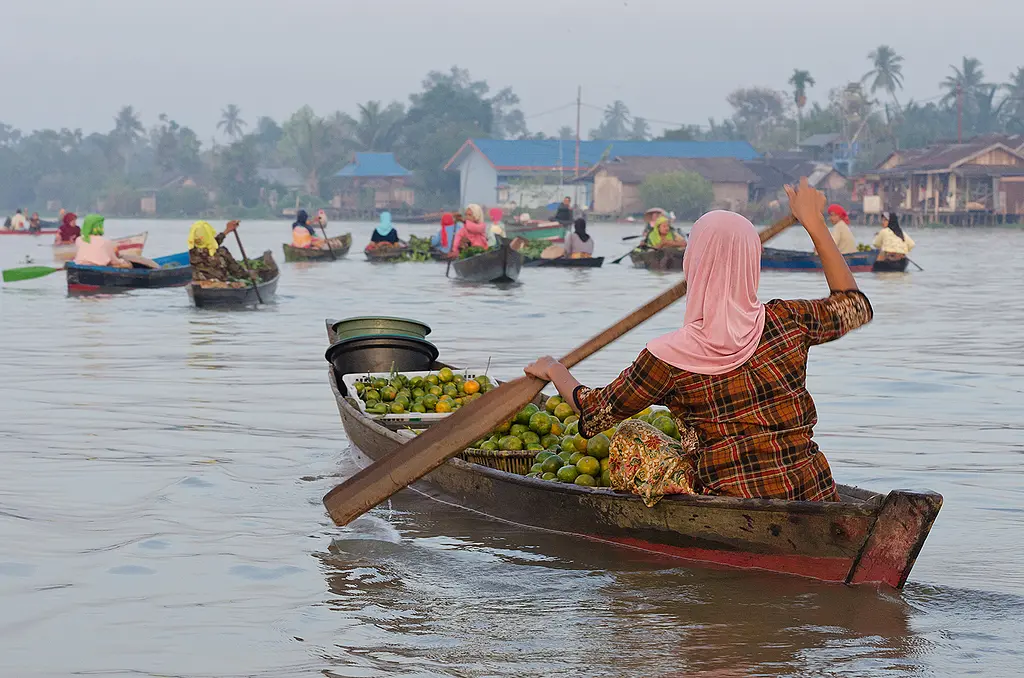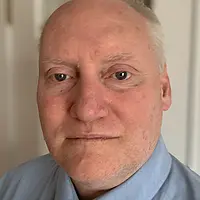
This blog is the third in our series Capacity Development Methods at Work Locally. Scroll to bottom to read the other blogs in the series.
The entire development community needs to interrogate the traditional power dynamics of donor-driven development and look for ways to amplify the local voices of those who too often have been left out of the conversation. — Samantha Power, USAID Administrator
USAID has increasingly committed to localization in both action and resourcing over multiple Administrations. USAID’s current topline goals for localization success are defined as increasing funding to local actors to 25% over the next four years and to build local voice into 50% of all programs over the next decade. In its most recent 2022-2026 Learning Agenda, USAID put forward the following question on localization:
How can USAID more equitably engage local knowledge, assets, and practices and align programming with local priorities and metrics for success?
In this blog, we share the process, lessons, and insights gained in facilitating durable capacity development outcomes in complex, regional organizations. While our work in this space spans decades, our focus here is on our experience under the Sustainable Fish Asia Local Capacity Development Activity (SUFIA LCD), funded by the USAID.
Local Capacity Development Goals: How to Support Complex Organizations in Practice
Since August 2020, RTI has been working to enhance the operational and technical capacity of two regional fisheries organizations— the Southeast Asian Fisheries Development Center (SEAFDEC), and the Coral Triangle Initiative on Coral Reefs, Fisheries and Food Security (CTI-CFF) to improve marine biodiversity and fisheries resource management throughout the region. Further developing these organizations’ capacity and accountability allows them to access larger and more diversified funding and to better serve their constituents and achieve their respective missions.
Both SEAFDEC and CTI-CFF are large, multi-country member organizations with complex operational and communications standards and processes, which necessitated a comprehensive approach to organizational capacity assessment and service provision – while securing support and buy-in from a broad array of individuals and operating units across the organizations.
Local Capacity Development Process and Tools
Building sustainable capacity that improves performance rarely occurs in isolation. It is essential to customize diagnostic tools and use a set of integrated actions to determine performance needs and then tailor capacity development activities to those specific needs. SUFIA LCD tailored this approach by utilizing an RTI-developed capacity building approach that consisted of four separate diagnostic instruments, listed below, allowing us to hone in on each partner organization’s capacity building needs and gaps.
- Participatory Local Organizational Capacity Assessment (PLOCA). Used to assess overall organizational health, this RTI-developed measurement tool consists of 10 organizational categories and dozens of organizational capacity measurement indicators.
- Non-US Organization Pre-Award Survey (NUPAS). A customized tool developed and utilized by USAID and its partners to evaluate organizational systems, risk, and compliance with USAID standards.
- Organizational Sustainability Framework (OSF). Created specifically for SUFIA LCD to measure holistic organizational sustainability including financial, environmental, and fair labor.
- Organizational Performance Index (OPI). An open-source tool funded and used by USAID to qualitatively assess organizational performance and ability to achieve the organizational mission.
Over the course of six weeks, we worked closely with SEAFDEC and CTI-CFF to complete the participatory organizational assessments and seamlessly combine the findings into an individualized Capacity Development Action Plan (CDAP). The CDAPs included a priority classification (low, medium, and high) for each identified capacity need as well as a schedule for completion and the entity or individual responsible for completion of that task.
RTI provided capacity building services to the two partners through multiple modalities including direct technical assistance, capacity development grant awards, co-hiring consultants, and providing referrals to local and regional training opportunities.
RTI’s approach to organizational capacity development reflects the steps identified in USAID’s CLBD-9 Indicator, including:
- Developing and customizing organizational assessment tools.
- Seeding ownership by co-designing initial and annually updated capacity development action plans that identify capacity and compliance needs.
- Establishing a system to provide or refer organizational partners for capacity services.
- Monitoring and tracking milestones that signal capacity gains and improved performance.

Top 10 Capacity Development Insights and Key Recommendations
1. Invest in relationships early and build trust
Evaluating complex organizations, identifying capacity gaps, and suggesting areas for improvement can be an overwhelming experience for a local organizational partner. To mitigate this, it’s important to build relationships with key stakeholders. SUFIA LCD identified leaders within both organizations and collaborated with them to modify the tools and the process for evaluation to meet their needs. This helped develop critical buy-in and ensured the process was collaborative from the beginning.
2. Adapt tools to local context and partner needs
Using the PLOCA tool to gauge overall organizational health, SUFIA LCD also added several capacity assessment tool “plug-ins” to address other issues including project objective, need for USAID compliance, interest in sustainability and private sector engagement, Gender Equality and Social Inclusion (GESI), and increased overall performance. Adapting existing tools and customizing with partners made the participatory assessment process their own and will support continuous capacity development or improved performance in the future.
3. Incorporate inclusive elements into capacity assessment metrics and service design
While most organizational measurement tools include evaluation indicators for non-discriminatory hiring practices and workplace harassment, RTI’s PLOCA also includes equity and inclusion indicators, such as leadership composition, ethics, workplace safety, and pay equity, among others. This helps organizations go beyond “checking the box” on equity and ethical issues to integrating them throughout every part and process of the organization. Using this integrated assessment, SUFIA LCD partners updated relevant policies that integrated GESI and positioned them to take leading roles to bring about greater gender equity and inclusion in the fisheries sector.
4. Account for organizational culture when supporting strategy and capacity development
SEAFDEC and CTI-CFF, while both regional inter-governmental entities, are two very different organizations with different missions and organizational cultures. These differences required full customization of the four diagnostic tools referenced above to consider organizational culture, as well as adapting the pace and process in conducting participatory organizational capacity assessments and gathering subsequent capacity development inputs. For instance, due its organizational governance structure, one partner took much longer to approve new activities proposed by SUFIA LCD that had not been included in their annual workplan.
5. Embrace technology but also utilize on-site coaching and technical assistance
The COVID-19 pandemic and the resulting restrictions on international travel and the movement toward remote working meant that we had to adapt our model of in-person assessment to a model that used web-based surveys, virtual discussion groups, and regular email exchanges. Technology tools such as Zoom meetings, online surveys such as Microsoft Forms, and virtual whiteboard programs such as Miro Boards, allowed for significant participation during the organizational capacity assessments. However, remote and virtual meetings and training have their limitations and whenever possible, we visited partner organizations to provide on-the-job training. This in person training is particularly important when introducing new systems, such as financial management, human resource file management, and knowledge management. It also allows for quick feedback and adapting to each organizations’ unique needs.
6. Design and deliver diverse, largely local, and demand-driven capacity services
We have learned that capacity service delivery modality works best if it follows a style and pace that accounts for different learning styles and the availability of organizational resources. SUFIA LCD built out a menu of modalities for capacity services including direct instruction, on-site coaching, consultant recruitment, subawards, service contracts, memberships, subscriptions, exchanges, travel support, virtual instruction, observation, and other modes of learning and service delivery.
Offering a variety of capacity development services has proven to be a cost effective and adaptable approach to delivering assistance and helps organizations take ownership of their capacity development during the project by developing relationships with the service providers.
7. Understand and enhance knowledge and document management systems
Knowledge management and process documentation is critically important for contributing to institutional memory and to avoid “reinventing the wheel” for each new initiative. CTI-CFF, for example, has a human resource practice that limits staff tenure, which means they need to train newly hired employees on a regular basis. SUFIA LCD worked with the organization in three directions to better understand and enhance their systems, including: (1) discussing and framing knowledge and monitoring and evaluation (M&E) data management systems; (2) experimenting with a new cloud-based document use system; and (3) providing new staff with a standard training that includes knowledge and M&E data management systems.
8. Design capacity development initiatives as an ongoing process rather than a one-time activity
Capacity development is a continuous process of learning, adapting, and growing, both at the individual and organizational levels. This process is critical for ongoing viability and ensuring that partner organizations lead their own learning. It has been our experience that organizations that understand and adopt this process of self-learning and continuous improvement have the most sustained organizational strengthening outcomes. Throughout SUFIA LCD, we communicated and reinforced this message with all partners. Both SEAFDEC and CTI-CFF conducted their own in-house trainings using project-generated materials to amplify the learning and provide development opportunities to more staff.
9. Facilitate locally led, collaborative action planning
SUFIA LCD was designed as a “bridge” project over a 24-month period to increase the capacity of SEAFDEC and CTI-CFF to design and implement projects directly with USAID. Given that each organization had existing strategic and performance plans, scheduled activities, and commitments, it was important to ensure that project-required capacity inputs aligned with and did not contradict partner priorities. A partner-led collaborative learning process using a standard CDAP tool allowed the organizations to prioritize mutual goals, set agreed-upon timelines, and adapt capacity development activities and schedules to match both partner and project plans. This collaborative process also allowed us to incorporate a modified USAID NUPAS tool and work with both partners to meet the compliance standards by the end of the project.
10. Combine quantitative and qualitative data to highlight successes
RTI’s PLOCA uses a quantitative scoring system to measure both the existence and effectiveness of dozens of organizational capacity indicators. Analyzing data from baseline, midpoint, and endpoint organizational assessments generally show quantitative improvements over time, but they don’t tell the full story. We also register the qualitative capacity changes or impacts our organizational partners make over time and have found that qualitative stories are sometimes more indicative of lasting organizational change and demonstrate a cultural commitment to capacity development.
What Does Localization Success Look Like?
The answer to this question is largely geographically and culturally determined.
The SUFIA LCD Activity was a small but important initiative that has contributed to USAID’s efforts in localization, utilization of USAID’s Local Capacity Development Policy, and progress toward the CBLD-9 capacity building indicator.
Using the recommendations detailed above and adopting a co-creation process that involves both local partners and USAID can bridge the gap between local priorities and USAID program plans. The ultimate measure of success is when local organizations, like SEAFDEC and CTI-CFF, can directly implement programs funded by USAID.


